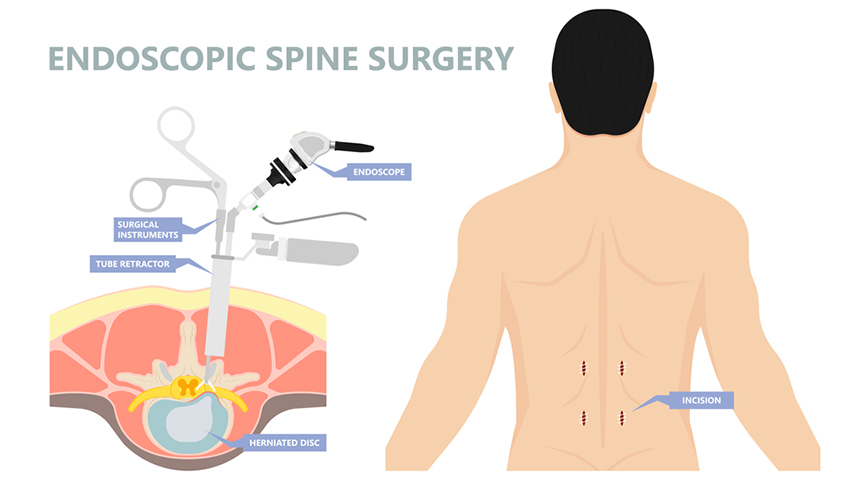Introduction
Endoscopic spine surgery is a minimally invasive surgical technique used to diagnose and treat various spinal conditions. It involves the use of an endoscope, which is a thin, flexible tube with a camera and light source, to access and visualize the spine. This approach allows for smaller incisions, reduced muscle and tissue damage, and faster recovery compared to traditional open surgery.

How Endoscopic Spine Surgery Works
During endoscopic spine surgery, the patient is placed under general anesthesia or local anesthesia with sedation. The surgeon makes a small incision and inserts the endoscope into the affected area of the spine. The camera and light source on the endoscope provide a clear view of the spinal structures on a monitor. Specialized surgical instruments can be inserted through additional small incisions to perform the necessary procedures, such as removing herniated discs, decompressing nerve roots, or stabilizing the spine.
When Endoscopic Spine Surgery is Needed
Endoscopic spine surgery may be recommended for a range of spinal conditions, including:
Herniated discs: When a disc in the spine bulges or ruptures, causing pressure on nearby nerves, endoscopic surgery can be performed to remove or repair the affected disc.
Spinal stenosis: This condition involves the narrowing of the spinal canal, resulting in compression of the spinal cord or nerve roots. Endoscopic surgery can be used to relieve the pressure and alleviate symptoms.
Spinal deformities: Certain spinal deformities, such as scoliosis or kyphosis, may be treated with endoscopic techniques to correct the alignment of the spine.
Spinal tumors: Endoscopic surgery can be used for the removal of certain spinal tumors or to obtain biopsies for diagnosis.
Facet joint syndrome: When the facet joints in the spine become inflamed or degenerated, endoscopic surgery can provide relief by removing or ablating the affected joint tissue.
Spinal instability: In cases of spinal instability, endoscopic surgery can be used to stabilize the spine through techniques such as fusion or implantation of spinal hardware.







